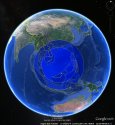Chinese Military Using Jamming Against U.S. Drones
Global Hawk targeted over disputed South China Sea islands
China tried to electronically jam U.S. drone flights over the South China Sea in a bid to thwart spying on disputed island military construction, U.S. officials said.
Global Hawk long-range surveillance drones were targeted by the jamming in at least one incident near the disputed Spratly Islands, where China is building military facilities on Fiery Cross Reef.
Details of the drone interference are classified. A spokesman for the Hawaii-based Pacific Command and Pacific Air Force declined to comment on the jamming.
On the Chinese challenge of the P-8 flight, Pacific Command spokesman Capt. Chris Sims sought to play down the incident.
“There have been a number of times when these PACOM forces have been queried by [People’s Liberation Army] PLA forces, but we have continued on without altering our planned activities,” Sims said.
Regarding South China Sea drone flights, Sims said there were no Chinese aerial intercepts against U.S. unmanned aerial vehicles over the disputed waters that China is claiming as its maritime domain. Sims said he cannot confirm jamming or electronic warfare reports, and would not elaborate in an email.
Pacific Air Forces spokeswoman Rebekah Clark declined to comment on Global Hawk surveillance flights near the Spratlys because of “operational security.”
The high-altitude drones are based at Anderson Air Force Base in Guam on a rotational basis. “From Guam, the Global Hawk supports U.S. intelligence, surveillance, and reconnaissance priorities, operational plans, and contingency operations through the Pacific Theater,” Clark said.
The RQ-4 Global Hawk is the Air Force’s premier high-altitude, long-range surveillance drone that can fly remotely piloted missions, and missions that are programmed in advance, and can survey 40,000 square miles in a day.
The 47-foot long jet-powered drone has a range of 8,700 miles and can fly up to 60,000 feet in altitude. Its flying time is up to 28 hours.
Last week, David Shear, the assistant defense secretary for Asian and Pacific security affairs, said Global Hawks are deployed in Asia as one element of a buildup of forces near the South China Sea.
“We’re engaged in a long-term effort to bolster our capabilities in the region,” Shear told the Senate Foreign Relations Committee. “Just a few examples of the increases in our capabilities in the region include the deployment of Global Hawks and F-35s. Soon we will be adding to the stock of V-22s in Japan as well.”
more info here:


